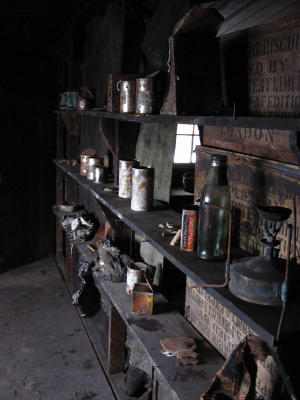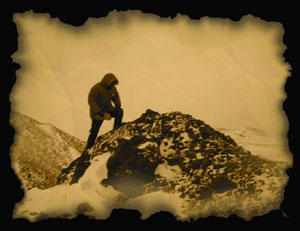Where Do I Start?

I thought that the longer I was here, the easier it would be to describe.
I was wrong.
We moved into our winter quarters this week. Most of the summer season workers have left the Ice at this point, and their rooms are becoming available. A few hundred a week slip away on those huge C17s, and now only a handful of anxious field researchers are left, hoping their planes depart on schedule. Visibility has been poor lately, and flights have boomeranged.
Most of us have moved into 155, the building with the galley. When the weather gets dangerous we can hunker down here and wait it out, knowing food won't be a problem. I think it's foolish to intentionally stay anywhere else. Condition 1 can last for days, and no one goes outside till we reach Condition 2. Right now we're enjoying Condition 3, summer weather, but I can tell that things are changing. In the two weeks that I've been here, the temperature has begun to dive.
Yesterday (Sunday for me, Saturday for you) I planned on making a hike to Castle Rock, a formation a few miles from the Station. The wind was up and the sky was all clouds, so we decided against it. Instead, I signed up for a tour of Hut Point, which is on the outskirts of the station itself. When we arrived at the fire house for the tour, we were told that it had been cancelled due to weather.
Three of us decided to go without the tour guide. I accepted responsibility, signed the papers, and took the key. We headed off down the hill toward the point, the wind at our backs. It was cold, and very windy, but the winds pushed us along the trail from behind. We had no idea what we were in for on the return trip, when the wind would fight us every step of the way. None of us realized that the wind-chill factor had hit 34 degrees below zero.
And it was worth it, worth every bit of it. Hut Point sits at the edge of Winter-Quarters Bay. This is where Earnest Shackleton first stepped foot in Antarctica, standing alongside Scott on that original expedition in 1902. They built a wooden hut on the Point, and lived there for some time. The first Antarctic science was done there, and it was good science.
For the next 102 years winds and storms whipped across Hut Point. We headed there, not to stand on the site of a long-gone hut. . . but to unlock its door - and walk inside. First of all, stumbling in from that numbing cold and using the hut as shelter, just as they had, was an amazing moment for me. Then my eyes adjusted, and I began to read the sides of wooden crates that have sat unmolested since the day Scott's team sailed for England. "SPECIAL DOG BISCUITS - SCOTT EXPEDITION". There were tools, coals from the last meal they'd cooked, canned plums from London, the carcasses of seals - killed for their meat, shelves of supplies, straw on the floor where Shackleton might have slept.
Sorry if I'm being dramatic, but it was dramatic, and we treated it all with reverence, careful to not even brush up against anything. We never touched a thing beyond the door and the visitor's book we all signed. I wrote down the time I entered, but forgot to log the time I left. Somehow, that seems fitting for such a place, a place forever waiting the return of the heroes who built it.
There is a wooden cross, Vince's Cross, just beyond the hut on a rise of volcanic rock. We stood by it a few minutes, letting the wind hold us up, and watched as two Weddle seals played in a ten foot hole they'd kept open in the ice. Then we started back up the trail, in silence.
This place will never get easy to describe.


 UNITED STATES ANTARCTIC PROGRAM
UNITED STATES ANTARCTIC PROGRAM
